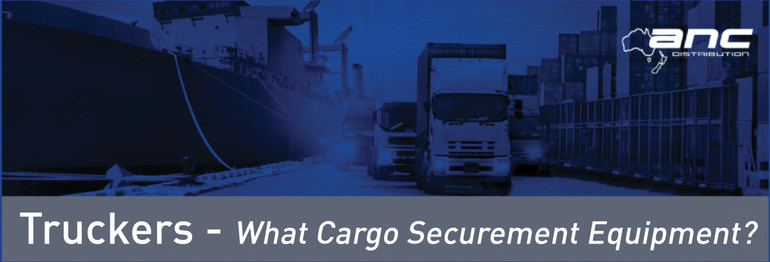What Cargo Securement Equipment do I Need? — New Zealand Truckers
Cargo securement tools and equipment are an essential part of the trucking industry; with such a wide range of cargo to be shipped across the country, truckers require a variety of general and specialized tie-down equipment to meet federal safety regulations and get the load to its destination efficiently. You may be new to trucking, have just purchased your own rig, or are required to move new cargo and are required to use different tools and equipment to tie it down. Whatever your situation, we’ve provided an easy-to-follow guide for New Zealand truckers to easily know what they need to follow industry best practice and get the job done safely and effectively.
This guide is separated into particular load or cargo types. Find the category of the load you’re hauling and browse the tools and equipment necessary to keep the load secure.
This guide is specific to tools and equipment necessary to keep cargo secure. Other products and equipment may be needed to retain your cargo’s quality, such as pallet wrap, desiccants, container liners, etc.
For complete information on equipment, securement methods, and truck and trailer requirements for all types of cargo transported on land in New Zealand, check the Official New Zealand Truck Loading Code.
Containers
Shipping containers are common freight in New Zealand and can be fit onto a flatbed trailer. The most secure and standard method of securing containers is to use twist locks. However, if your trailer is not equipped with twist locks and you’re hauling a sea freighter container, you may still use chains and webbing to secure it.
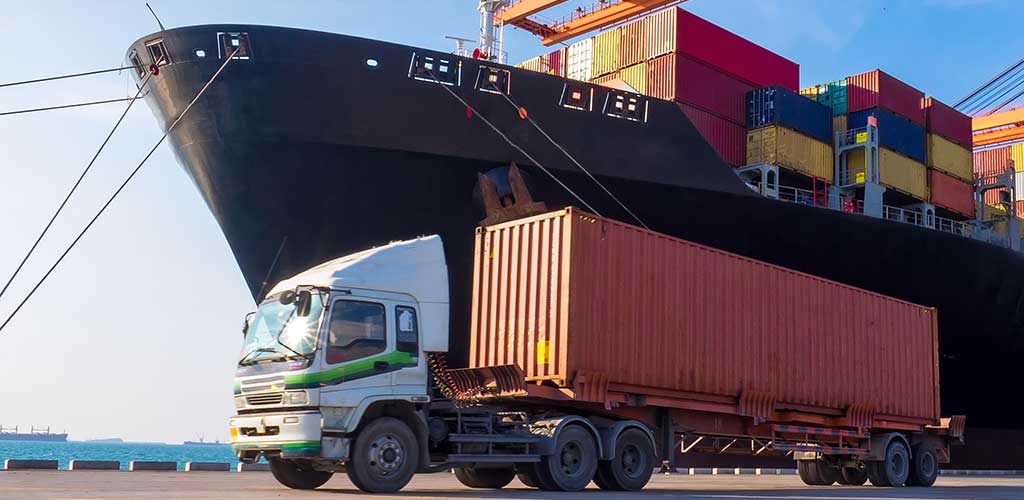
Twist Locks
During loading, a shipping container will be lowered onto the trailer with the corners placed over unlocked twist locks. Once the twist locks are placed into the container corners, they are locked in place and the container is secure.
Chains
Chains and webbing should only be used for securing sea freighter containers and newsprint bases. If you don’t have twist locks and are securing a container on a flatbed trailer, it is imperative to use both chains and web straps. Using proper chain sizes and grades to achieve a safe load rating, secure a 3-point-hitch around one corner of the container, then bring it across the truck bed to the opposite end and secure it again with a 3-point-hitch. Do the same with the opposite side corner so the chains create an “X” shape. Then secure with a chain binder.
Chain Binders
To properly tighten and lock your chains when securing a sea freight shipping container, you’ll need a hefty chain binder. You can go with a standard lever action binder or opt for a more efficient ratchet load binder or double-action/recoilless.
Webbing
Chains and webbing should only be used for securing sea freighter containers and newsprint bases. If you don’t have twist locks and are securing a container on a flatbed trailer, it is imperative to use both chains and web straps. After securing the sea freight shipping container with chains, toss properly load-rated web straps over the top of the container and secure them to a web winch on the other side.
Web Winches
To secure your web straps in place, loop them into the winch and use a winch bar to tighten. Though standard winches are perfectly acceptable, depending on your preferences you may opt for a different type of winch, such as an efficient ratchet cap winch, a double boss winch to handle clearance issues, a temporary clip-on winch, or a sliding winch for versatility.
Winch Bars
Winch bars are placed into the winch cap to turn the mandrel and tighten or loosen the straps.
Pallets
Pallets should be already wrapped or stabilised before loading. Web straps and winches should be sufficient for most pallet securement applications, but sometimes a cargo tarpaulin may be necessary.

Webbing
Web straps of the appropriate working load limit should be used over the tops of the pallets. In some cases, wrapping webbing around the front or back of a pallet is necessary to prevent horizontal shifting or tipping.
Web Winches
Standard web winches are necessary to keep straps tight and the palleted cargo secure. For more convenience or depending on your application, you may also use double boss winches, clip-on winches, or sliding winches. Ratchet cap winches are and easier to operate with a winch bar.
Winch Bars
Winch bars are placed into the winch cap to turn the mandrel and tighten or loosen the straps.
Tarpaulin
To prevent pallets from shifting forward and back or to prevent weather from damaging cargo, it may be necessary to apply a tarp over the top of the pallets. Tarps can keep rain, snow, dirt, debris, and more from damaging your cargo while adding an extra layer of securement.
Tarp Ties
To keep your tarp secure to the flatbed trailer you’ll need a set of tough tarp ties that can withstand harsh conditions and long trips.
General Freight
This category can contain everything from drums to small containers, cartons, boxes, sacks, cylinders, mixed loads, and more. Thus, depending on your cargo, a wide variety of equipment can be utilised to keep the load secure. Below are some suggestions you should consider before transport.
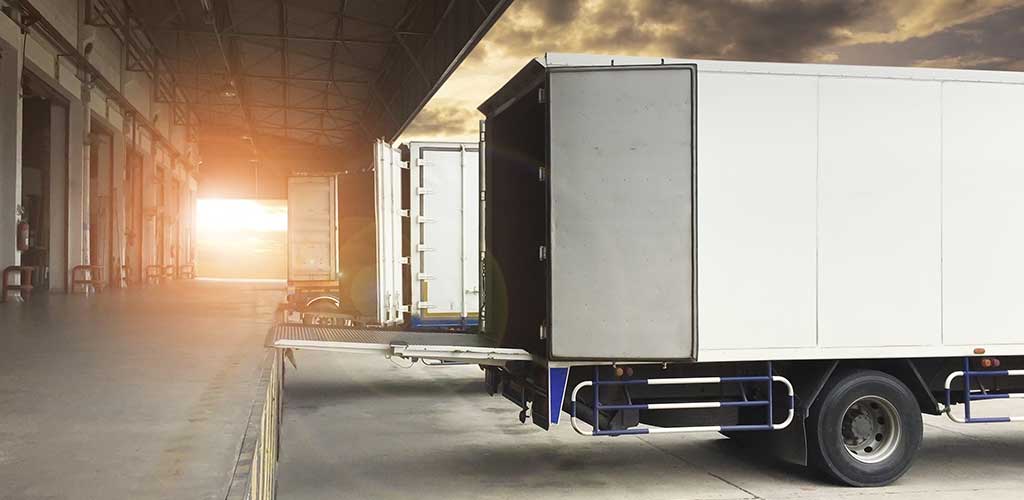
Rope / Chains / Webbing / Web Nets
In general, you have the choice between using rope, chains, web straps, or web nets when tying down your load. As long as the load ratings on the tie-downs are appropriate for the cargo, then you are free to use them. Judge which tie-down method would be best suited for each particular cargo type. For example, chains are best used with heavy-duty cargo that you don’t have to worry about getting scratched from the chain while a web net may be appropriate for cartoned cargo to prevent it from shifting during transit.
Chain Binders
Chain binders allow you to lock your chains in place and keep them taught so your heavy-duty cargo remains fixed in place. Standard lever action binders are suitable for most applications, though you may opt for a more efficient or convenient option such as a ratchet lever binder or double-action/recoilless binder.
Web / Rope / Combination Winches
When using web straps or rope on to secure cargo on a flatbed, you need the appropriate winch for tightening them. You may choose between web winches or rope winches, or you may get a combination winch which can be used for both.
Winch Bars
Winch bars are placed into the winch cap to turn the mandrel and tighten or loosen the straps.
Tarpaulin
Tarps can be used to prevent cargo from shifting as well as to keep rain, snow, debris, and more from damaging your load.
Tarp Ties
To keep your tarp secure to the flatbed trailer you’ll need a set of tough tarp ties that can withstand harsh conditions and long trips.
Shoring Bars
When securing cargo in closed trailers, you need to prevent cargo from shifting forward and rearward when accelerating and braking. Adjustable shoring bars allow you to prevent this shifting and hold cargo in place. Dunnage bags are also a viable option depending on your needs and cargo type.
Logistics Straps / Trailer Hardware
To effectively tie down your load in a closed trailer, strong logistics straps are essential. Similar to flatbed web straps, these straps connect to hardware that’s locked on the tracks on your trailer walls. A variety of track and track hardware can be purchased depending on your applications.
Construction Equipment
Heavy-duty construction equipment and vehicles are common freight and require some of the most careful consideration when securing them to your trailer in order to prevent severe accidents.

Chains / Steel Wire Rope
The only acceptable tie-downs for heavy-duty construction equipment and vehicles in New Zealand are chains and/or steel wire rope. Using any other tie-down methods could result in fines, injury, or death. Be certain of the appropriate chain or rope thickness and load bearing capacity in order to properly and safely tie down heavy machinery and equipment for transport.
Chain Binders
Chain binders are essential to lock your chains in place at the appropriate tension to hold heavy construction equipment and machinery in place on your flatbed trailer. Make sure to safely and accurately hook chains to sturdy anchor points with 3-point-hitch connections or an equivalent method in strength before locking with a binder. Chain binders come in lever action, ratchet action, and double-action/recoilless models depending on your application and budget.
Timber Loads
Be aware that non-tie-down restraint equipment is required to haul timber, which includes a headboard, cab guard, sideboards and tail gates, and side and centre posts. Proper load anchorage points must also be included.
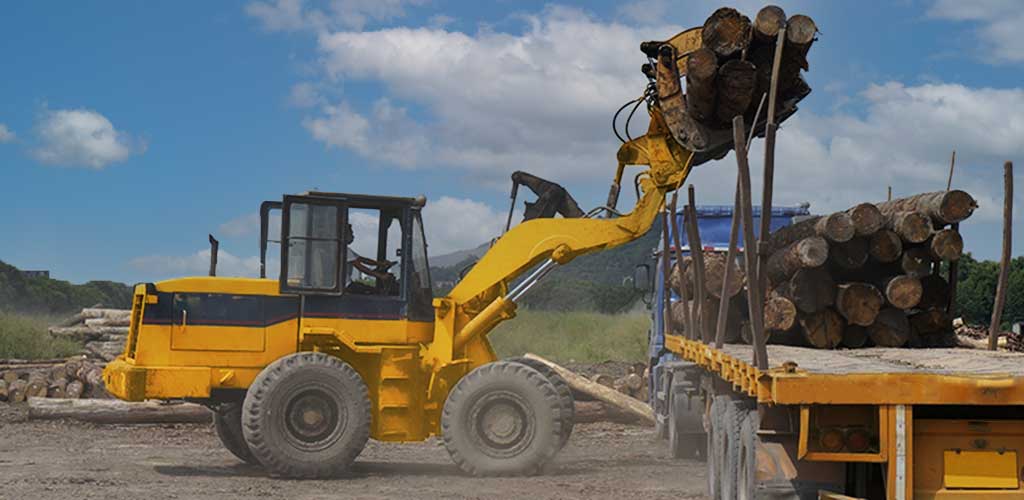
Tarpaulin
A tarp will offer no adequate tie-down securement but is necessary for weather protection.
Tarp Ties
To keep your tarp secure to the flatbed trailer you’ll need a set of tough tarp ties that can withstand harsh conditions and long trips.
Webbing / Rope
Web straps are the standard for hauling timber provided they meet the proper load capacity requirements. Ropes can be used in place of webbing when appropriate. Preferred ropes are manufactured of polypropylene, polyester or polyamide for proper strength and durability. Ensure all webbing and ropes comply with federal regulations before purchase.
Web / Rope /Combination Winches
In order to properly use web straps or rope, you’ll need an appropriate winch to keep them tight. Web and rope winches are standard, though combination web/rope winches can be found that act as a 2-in-1 solution.
Winch Bars
Winch bars are placed into the winch cap to turn the mandrel and tighten or loosen the straps.
Chains
Be sure to choose chains with the correct thickness, grade, and load capacity rating necessary for the timber weight you’re hauling. Thanks to chains’ heavy-duty steel construction, they’re guaranteed to last longer and are best suitable for some of the heaviest timber loads allowed on the road.
Chain Binders
After properly hitching your chain to anchor points, next you’ll need to activate a chain binder to apply proper tension and lock them in place, thus effectively securing the timber load for transport. Lever action binders are effective and affordable, but if you’re looking for improved ease of use or more efficiency, then you may opt for a double-action/recoilless chain binder or a ratchet lever binder.
Steel Products
Chains, pins, and binders are all essentials when hauling steel cartage and ought to be a part of your equipment. Most steel loads will require chains, but some may be tied down with web straps or rope. If this is the case, special care must be taken to avoid contact with sharp edges.
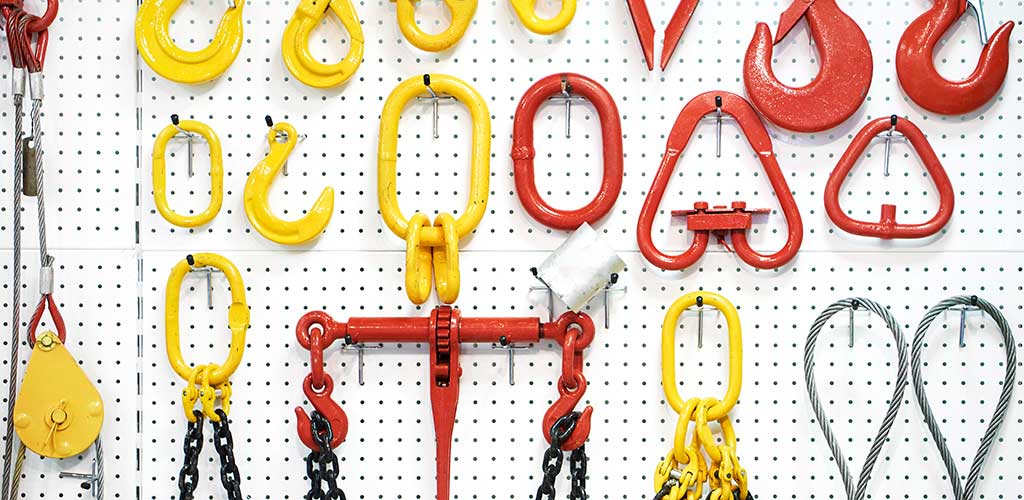
Chains & Pins
Chains and pins are the bread-and-butter securement tools necessary to haul most steel loads. Best practice is to properly evaluate load capacity ratings and choose chains with the relevant size and steel grade to ensure they’ll handle the job and retain their strength for several loads after. Grade 70 is the standard for steel chain, though other grades may be better suited for your load depending on the cargo being hauled.
Chain Binders
Chain binders allow you to apply proper tension on the chains and lock them into place, thus securing the steel load for transport. Without a binder, your chains are ineffective, so this is a mandatory piece of equipment for hauling steel.
Rope / Webbing
When the steel load is light enough to warrant the use of rope or web straps, great caution must still be taken to ensure optimal safety. Double-check the load rating on all ropes and straps and ensure their compliance with federal standards to avoid fines, injury, or death. Special care should be taken to avoid sharp edges to prevent the ropes or straps from breaking.
Web / Rope /Combination Winches
Winches allow you to tighten ropes and web straps to effectively secure cargo. Available in individual web or rope models, as well as combination web/rope models, you can choose the options that best suit your application. Some winches are even available with ratcheting caps for improved efficiency and convenience while others can be slid along the trailer frame for more variable placement, and more.
Winch Bars
Winch bars are placed into the winch cap to turn the mandrel and tighten or loosen the straps.
Web Protectors
If you opt for using web straps and/or ropes, you may wish to also purchase web guards or protectors to prevent abrasion and breakage. These guards fit over the sharp edges of the metal to allow your webbing and rope to slide along the edge without the risk of being cut.
Loose Bulk Loads
Loose bulk loads include any cargo that is not ideally transported in packaging or containers, such as sand, loose rocks, aggregate, asphalt, rubbish, etc. As such, this category of cargo is best suited to be hauled with dump trailers and therefore requires no “tie-down” equipment. However, a tarp, net, or sheet could be beneficial.
Tarpaulin / Net / Sheet
Using a tarp, net, or sheet to cover the load can protect it from unwanted debris or adverse effects from rain, snow, and other weather conditions. These can also help cargo like dirt from escaping the trailer.
Tarp Ties
To keep your tarp, net, or sheet secure to the flatbed trailer you’ll need a set of tough tarp ties that can withstand harsh conditions and long trips.
Pipe Loads
Pipe loads can include metal pipe, asbestos or plastic pipe, and concrete pipe. To properly transport pipe of any kind, it’s necessary you keep your lashings and tie-down equipment located close to your timber spacers in the same vertical plane for effective tension and support across the load. Do not use any unsupported section of rope rail for anchoring tie-downs and lashings.

Timber Dunnage
To keep pipes from damaging each other via contact and abrasion, and to provide effective support, it’s necessary and essential to place properly sized pieces of vehicle timber between the pipes that act as dunnage. Should any timber become wet or slippery due to excessive oil, grease, or the like, that timber should be replaced.
Chocks
Like vehicle timber, best practice for securing pipes for New Zealand transport includes using chocks (wood or otherwise) to ensure stability and support of the pipes. Chocks help to prevent the pipes from shifting back and forth in the trailer and add an extra layer of safety.
Rope / Webbing / Chains
You have the choice of using rope, web straps, or chains to tie down your pipe cargo depending on the requirements of the load. Chains are typically reserved for the heaviest loads. Regardless of which you choose, no tie-down should ever be passed over sharp corners unless guard protectors are used to prevent abrasion, fraying, and breakage. Minimum recommended sizes are:
- Cordage 12mm diameter
- Webbing 100mm
- Steel wire rope 12mm diameter
- Tested chain 8mm diameter of links
Chain Binders
Chain binders are necessary in order to apply the correct tension to the chains and lock them in place, thus effectively securing the pipes. You have your choice between lever action, ratchet action, and double action/recoilless binders. Standard lever action binders are the most budget-friendly, while ratchet lever binders offer improved efficiency, and double-action/recoilless binders add an extra layer of safety.
Web / Rope / Combination Winches
To apply tension to your web straps or rope, you must loop them through a winch and tighten the winch. Winches can be found in standard web or rope configurations, although there are combination web/rope winches that can make the job more convenient. Different models are available depending on your requirements and preferences; standard winches weld onto the trailer frame while others can be bolted or clipped on for more temporary purposes. Others can be slid anywhere along the trailer frame so you can place them in varying spots.
Winch Bars
Winch bars are placed into the winch cap to turn the mandrel and tighten or loosen the straps.
Packing
In order to protect the pipes from damage, sufficient durable packing material is needed. This packing material could include belting, second-hand rope, rope ends, and more that can be placed between the pipe ends in the bottom layer, thus acting as an extra dunnage layer and preventing abrasion. Packing material can should also be placed between each stacked layer of pipe.
Reels
Reels can include paper, newsprint, and plastics and present a unique securement challenge. Although some reels can be secured in van-type trailers using standard track hardware and logistics straps, most will be secured on flatbed trailers, and so the following assumes a flatbed.

Rope / Chains
Depending on the strength requirements of your reel load, you may use either strong ropes with a minimum 9m length, or heavy-duty chains. Chains specifically offer protection against rearward or forward loss of load while also maintaining the whole load in compression to produce extra frictional resistance against sideways movement or shifting. Ensure your chains offer the necessary strength capacities and are of an appropriate size and steel grade. Grade 70 chain is the standard, though other grades may be more suitable depending on the load. Whether you choose rope or chain, both should meet federal requirements and be tensioned properly, and you should have the correct number of tie-downs across the entire load for complete safety.
Rope Winch / Chain Binder
In order to tighten your rope or chains and secure the reels for transport, you’ll need a rope winch and/or a chain binder. Rope winches are most commonly available in standard weld-on or bolt-on configurations to be installed on a flatbed trailer. Some other winch styles include sliding winches that can be placed anywhere along the side of the trailer, temporary clip-on winches, ratchet cap winches for improved speed and efficiency, and more. Chain binders are used to tension and lock chains in place and are most commonly available as lever action models. If you require more efficiency or improved peace of mind in regard to safety, then go with a ratchet action or double-action/recoilless binder respectively.
Winch Bars
Winch bars are placed into the winch cap to turn the mandrel and tighten or loosen the straps.
Turnbuckles
Turnbuckles allow you to adjust tension between a chain and anchor point, or simply two separate connections. The use of turnbuckles may vary, but they are nonetheless necessary to have on hand in case your situation calls for it. Turnbuckles should always be at minimum the same strength as the chains they are attached to.
Core Protectors / Corner Boards / Edge Protectors
Core protectors help the reels maintain structural support when stacked and are a necessary piece of equipment to have on hand when transporting reels. When the use of core protectors is required, the protectors should be flanged in a manner to protect the core and reel ends. All edges and parts of the core protectors that may come into contact with rope should be radiused and ground smooth to prevent abrasion and breakage. When reels are stacked and core protectors are used, corner boards or edge protectors should also be used to restrain the sideways movement and shifting of the top reels. Having these materials on hand allows for complete safety and stability for transport. Boards should be 150mm × 40mm timber and about 2400mm in length.
Reel Chocks
Chocks provide stability to reels and prevent rearward and forward rolling. To help keep chocks in place and secured on the side rails, ropes can be threaded through holes in the rood chocks in sets of two or four. Be aware that chocks should typically be at least 100mm wide and 150mm high. Never leave loose chocks on the truck floor when the truck is moving.
Motor Vehicles
Generally, motor vehicles are transported by specialised car carrier trailers that are outfitted with wheel wells/chocks, anchor points, winches and other restraining devices. However, flatbed and similar trailers can be used for transporting vehicles with the proper equipment used and the correct safety measures taken.
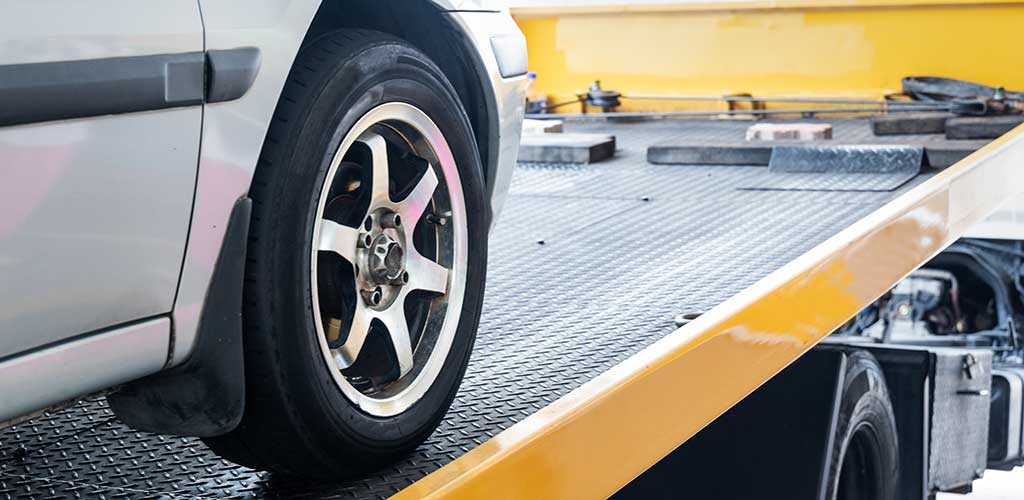
Wheel Chocks
Wheel chocks add extra security to your loaded vehicle if your trailer is equipped with trays or special wheel tracks. The wheel chocks can then be pinned or bolted to the tray or track with 10mm pins/bolts.
Chains / Steel Rope / Vehicle Straps
Motor vehicles may be secured to the trailer via chains, tough steel rope, or web straps rated for vehicle securement. Chains will require a binder and are better suited for heavy-duty vehicles. Most motor vehicle transport securement applications without a car carrier trailer will be best handled using steel rope and/or properly load-rated web straps secured either to special underbody brackets or to the vehicle axle.
Web / Rope / Combination Winches
Securing ropes and web straps requires the use of strong winches. Combination rope/web winches are available for convenience and versatility. The most common winch configurations are weld-on and bolt-on types that are meant for long-term use, while other models can help with specific situations; sliding winches are perfect when you need to easily reposition the winch for different loads. Clip-on winches allow for temporary installation and are typically best suited for smaller loads. Ratchet cap and double cap winches can improve your efficiency and solve clearance issues respectively.
Winch Bars
Winch bars are placed into the winch cap to turn the mandrel and tighten or loosen the straps.
Chain Binders
Chain binders, or load binders, allow you to apply the correct tension to the chains and lock them in place. Lever action models are the standard and are the most budget-friendly, though they require the most effort to activate. Ratchet binders allow for efficient tensioning and locking, while double-action/recoilless binders provide extra safety measures to prevent injury.
Flexible Tanks
Flexible tanks pose a unique securement challenge in that they are filled with liquids that constantly move and sway with trailer movement. Tanks can be transported in enclosed trailers or on flatbed trailers. Some tanks feature rigid bodies, but the equipment listed below is for non-rigid tank types specifically.

Headboards
All trucks and trailers transporting tanks must be fitted with a headboard.
Web Straps / Web Nets
Individual web straps or web nets are best practice when securing non-rigid flexitanks. If you use individual straps they should be brought over the top and around the tank in a full circle, and you should space them such that more straps are positioned at the front of the tank to support it during deceleration. Web nets are generally faster to implement and offer full coverage of the flexitank. Webbing should be rated to no less than 2,000kg.
Hazardous Materials
The specifications and equipment necessary for transporting dangerous goods or hazardous materials varies greatly depending on the cargo, and so equipment has not been listed in this guide. For reference, check the Land Transport Rule: Dangerous Goods 2005 (the Dangerous Goods Rule), which lists requirements for safe transport of dangerous goods on land.
ANC Distribution New Zealand
There are several manufacturers and distributors you can get your equipment from. ANC Distribution takes great care to provide the highest-quality products at the lowest possible prices so you can remain efficient and safe on the job.

